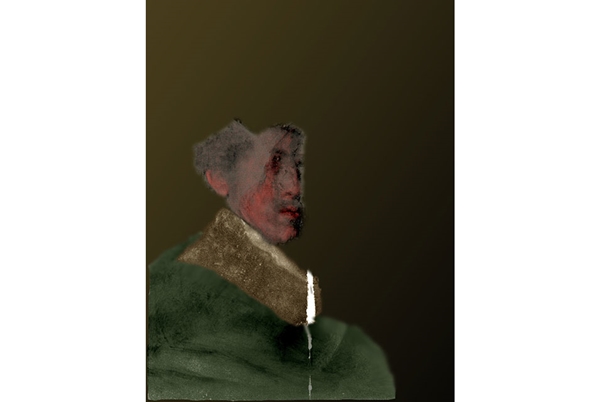
Photo: Courtesy J. Paul Getty Trust.
Rembrandt, An Old Man in Military Costume (1630).
Photo: wikiart.
Experts from Los Angeles, Antwerp, and Delft, have used element-specific X-ray technologies to reveal more precisely a ghostly image underlying Rembrandt’s An Old Man in Military Costume (1630), which now hangs in The J. Paul Getty Museum.
Though the underlying image, depicting another man in uniform, was first discovered in the late 1960s using tradition X-rays, with this new technology, conservators were able to identify the flesh tones of the man’s face as well as hues from his cloak.
“It gave us the best image we have to date of the head that’s lying beneath, and gives us much more information to try to understand the evolution of the painting that’s on top,” senior conservator of paintings at the Getty Museum Yvonne Szafran told the Wall Street Journal.
The “old man” figure is likely a character study or “tronie” than a portrait commissioned by the subject.
Anne Woollet, curator of paintings at the Getty Museum said in a statement, “There is a strong likelihood that, like An Old Man in Military Costume, this underlying image of the young man is another character study (tronie), but one in which Rembrandt used his own features.”
Tentative color reconstruction of Rembrandt hidden portrait.
Photo: Courtesy J. Paul Getty Trust.
The full significance of the painting will be subject to ongoing research.
Joris Dik, a professor of materials in art and archaeology at the Delft University of Technology in the Netherlands, who performed the scan, said in a statement, “MA-XRF is an X-ray technique that we designed to analyze and visualize hidden paint layers for the museum field.”
According to the Journal, the facial features and cloak can be visible because of the different chemical composition of Rembrandt’s paint. Instead of squeezing out paint from prepackaged tubes like most contemporary oil painters, 17th century artists had to mix their own colors, using pigments that more often than not contained hazardous chemicals like lead and mercury.
“I can see the choices that he made, and I can understand the things that he did in the context of his artistic development,” Dik told the Journal. “All of a sudden, you feel like you’re at eye level with the working artist.”
This is not the first instance when X-ray technologies have revealed new details of centuries old paintings. This past March, X-ray analysis revealed Rembrandt’s Susanna and the Edlers (1647) had gone through extensive alterations.
Related stories:
Sale of Rembrandt Portraits Owned by Eric De Rothschild Worth €150 Million Sparks Controversy
X-Ray Analysis Reveals Joshua Reynolds Repainted Rembrandt Masterpiece
70 New Rembrandt Paintings Discovered
7 Reasons We Love Rembrandt on His Birthday